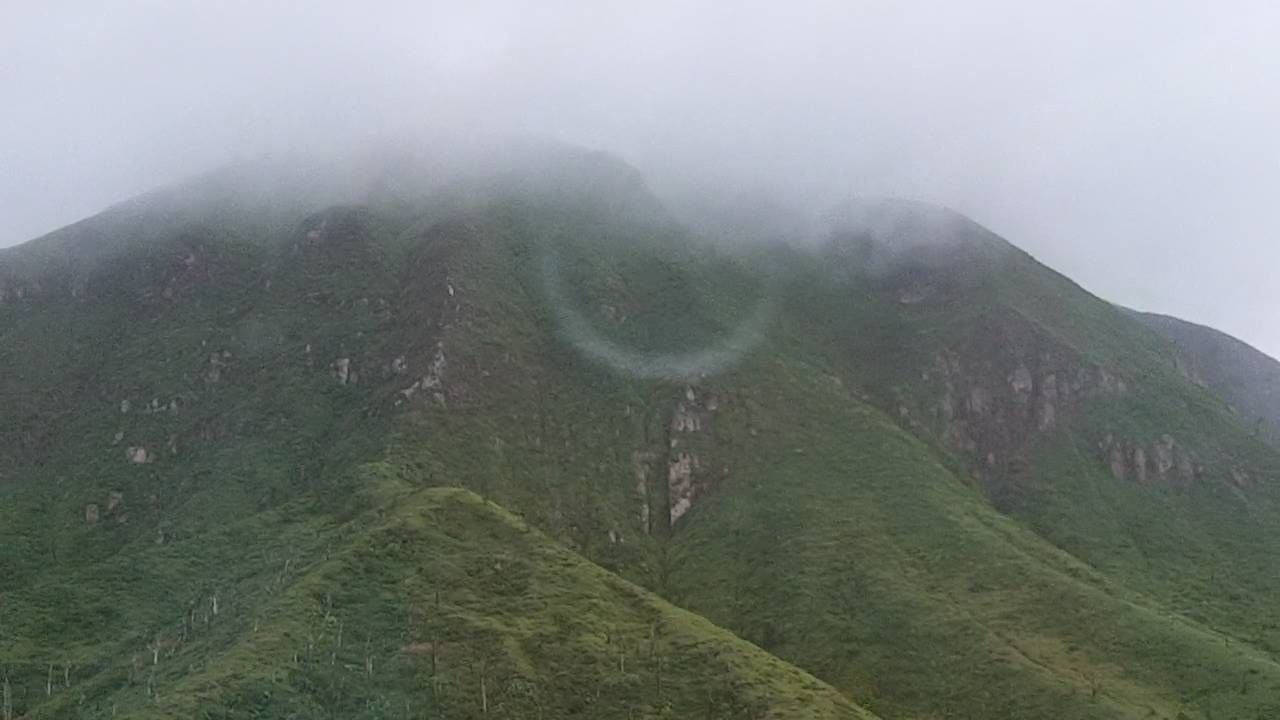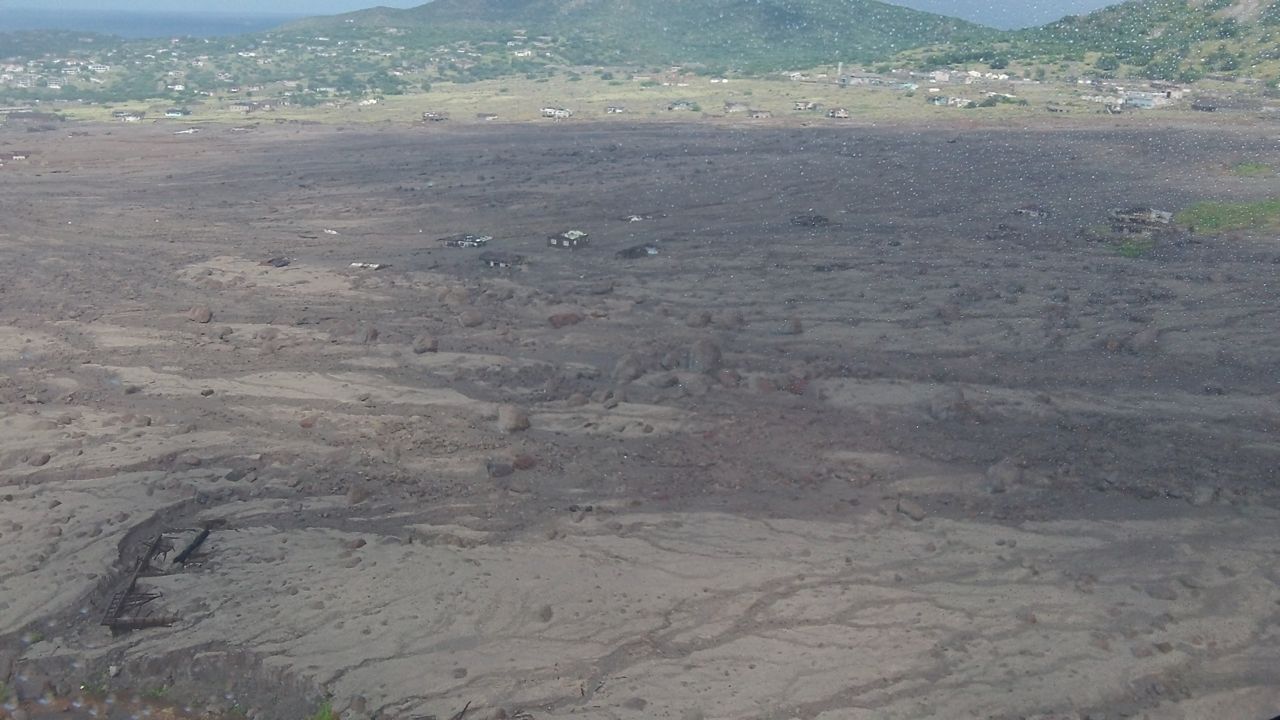Friday was a special day for me - as an early birthday present I got a helicopter tour of Montserrat from the captain. Ok, I might have twisted his arm a little bit :-)
We got up earlier than usually, we needed to be at Caribbean Helicopters on Fort Road near Fort James at 9 in the morning. When I looked out of the window, my heart just sunk - the rain has just stopped and a big patch of dark clouds was passing over our heads toward west, but the next one - the bigger one - was already getting nearer from the east. By the time we were ready to leave the boat and dinghy ashore, the sky was grey and it started to rain heavily. We waited for 10 minutes, but then it was time to go, even if we could get wet. We put on our rain jackets and cover ourselves with tarp (sotorka in Slovene). By the time we reached shore, rain have stopped and we weren't to wet. And soon the sun came out.
After a very fast taxi ride we arrived at the destination. I learned that there will be two other passengers on the same ride and after they arrived we've been given the safety briefing.
This is me, waiting for departure, with safety jacket in the bag around my belt.
Soon we boarded the helicopter and I couldn't believe my luck - i got to sit next to the pilot. It is without a doubt the "best seat in house" - with great view in all directions.
We flew over Jolly harbor, then out over the sea.
While the weather in Antigua has improved, this was our first glimpse of Montserrat
We turned left towards the volcano, flying over the "rivers" of pyroclastic flow, that made the island bigger than it was prior to 1995.
We tried to approach the peak of the volcano from several sides, but there was a thick rainy cloud sitting on top of it, preventing us to have a look at the volcanic activity.
We flew over the Plymouth, the former capital of the island and saw the devastation that volcano made in 1995 and 1996.
This is what's left of the the church.
It must be heartbreaking to loose everything like this. There were many homes destroyed and many left empty, because they are too close to volcano. It is going to be long time until people are allowed to live in these areas again. Volcano is still active, although relatively quiet since February 2010, but scientists predict the next bigger outburst in 2012.
The landscape in exclusion zone still looks somehow beautiful, although wild and rugged .....
Soon it was time to fly back. All the way back I was looking down at the sea really hard but couldn't spot any whale or turtle.
Maybe I was a little disappointed that we didn't see volcano puffing and spitting stones, but I was enjoying the flight immensely, more than I thought I would. It is not like flying on the plane, not even on a small one. It's much more fun, you are right in the middle of it, almost touching the trees and the rocks, with great view all around and feeling every sharper turn or acceleration. It was like riding in a cabrio through the air, and there was a smile on my face all the time. (Tomaz was laughing at my comparison, he said i am obviously missing my car :-)
On our way back we flew over Fort James.
And landed softly despite strong wind.
But the day was not over yet - we hitch-hiked to St.Johns, had a delicious lunch in Cafe BamBula and strolled through the town. We walked down to the vegetable market and seeing the buss station on the opposite side of street, idea came by itself - we took the bus back to Jolly Harbor. It was a fun ride, lady next to me was singing gospel songs aloud and the guy sitting next to captain has crossed Atlantic 10 times - on board of his 72 ft sailboat!
What an icredible day it was! And in the evening I was googling how to get a helicopter pilot license, was I too old, how much it costs etc. I'm afraid I might got hooked ....


















































